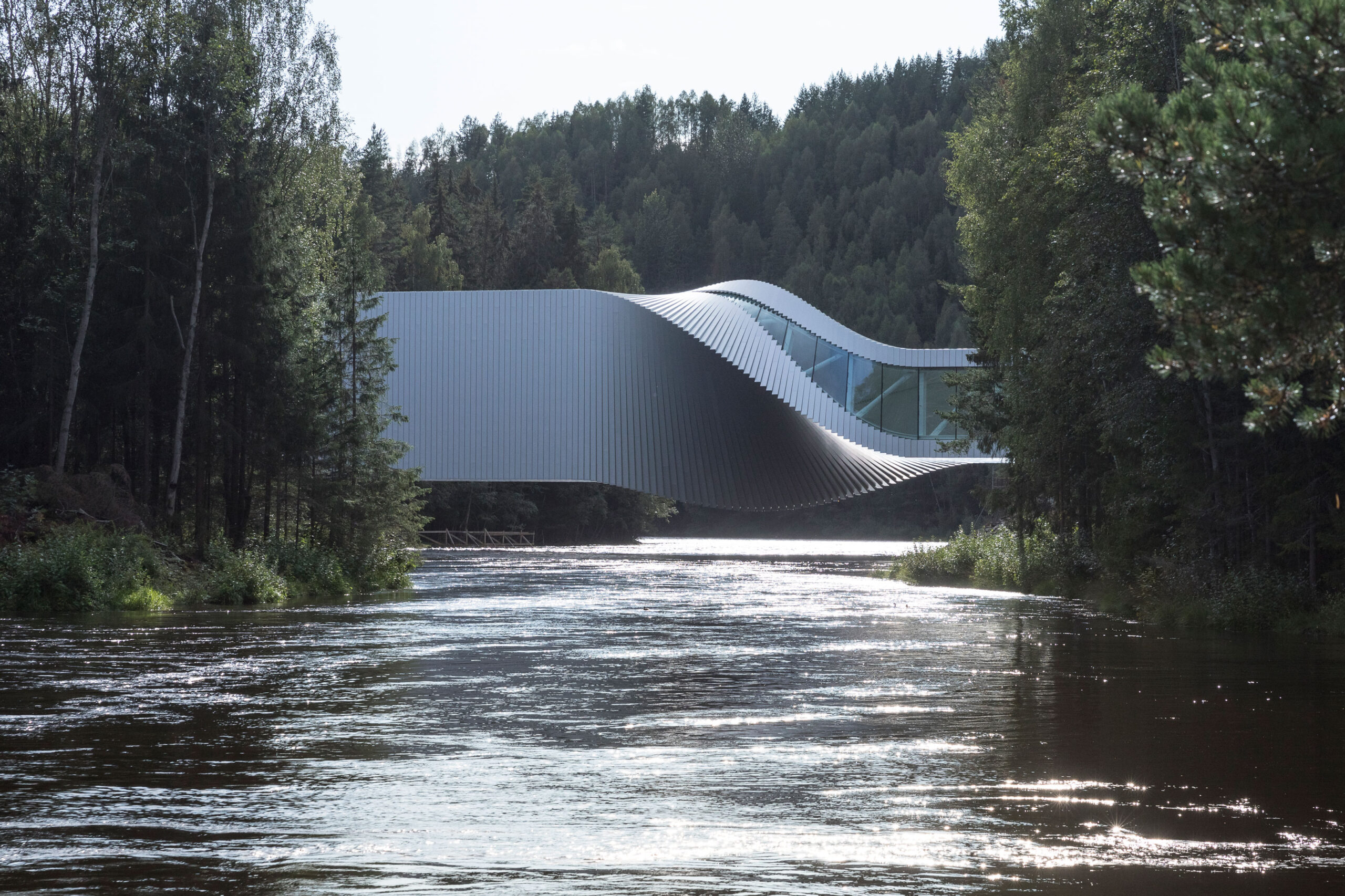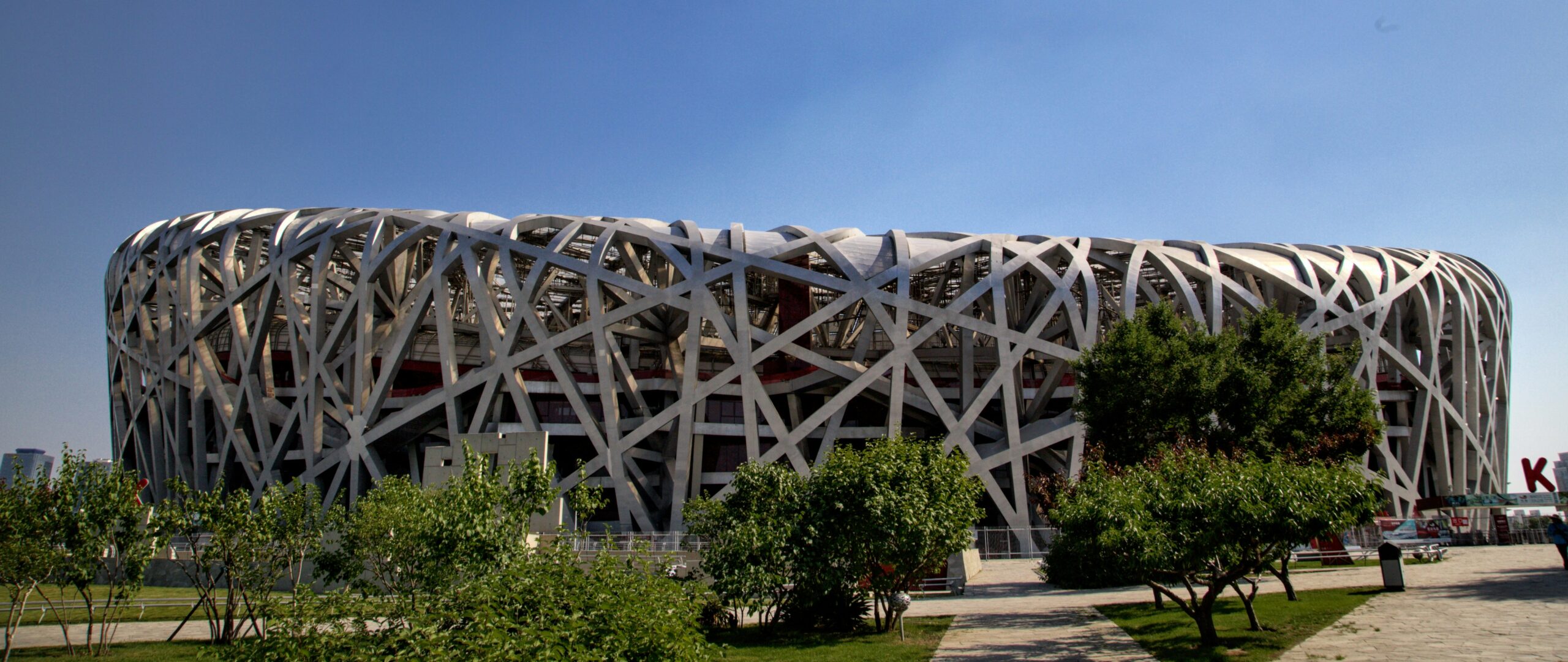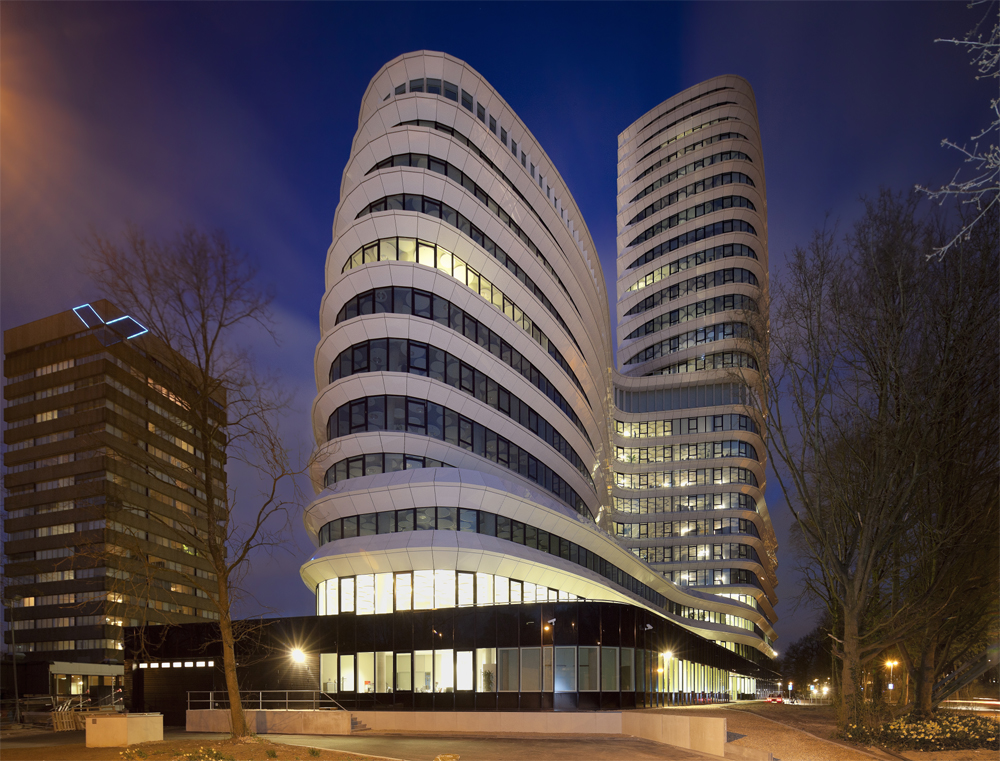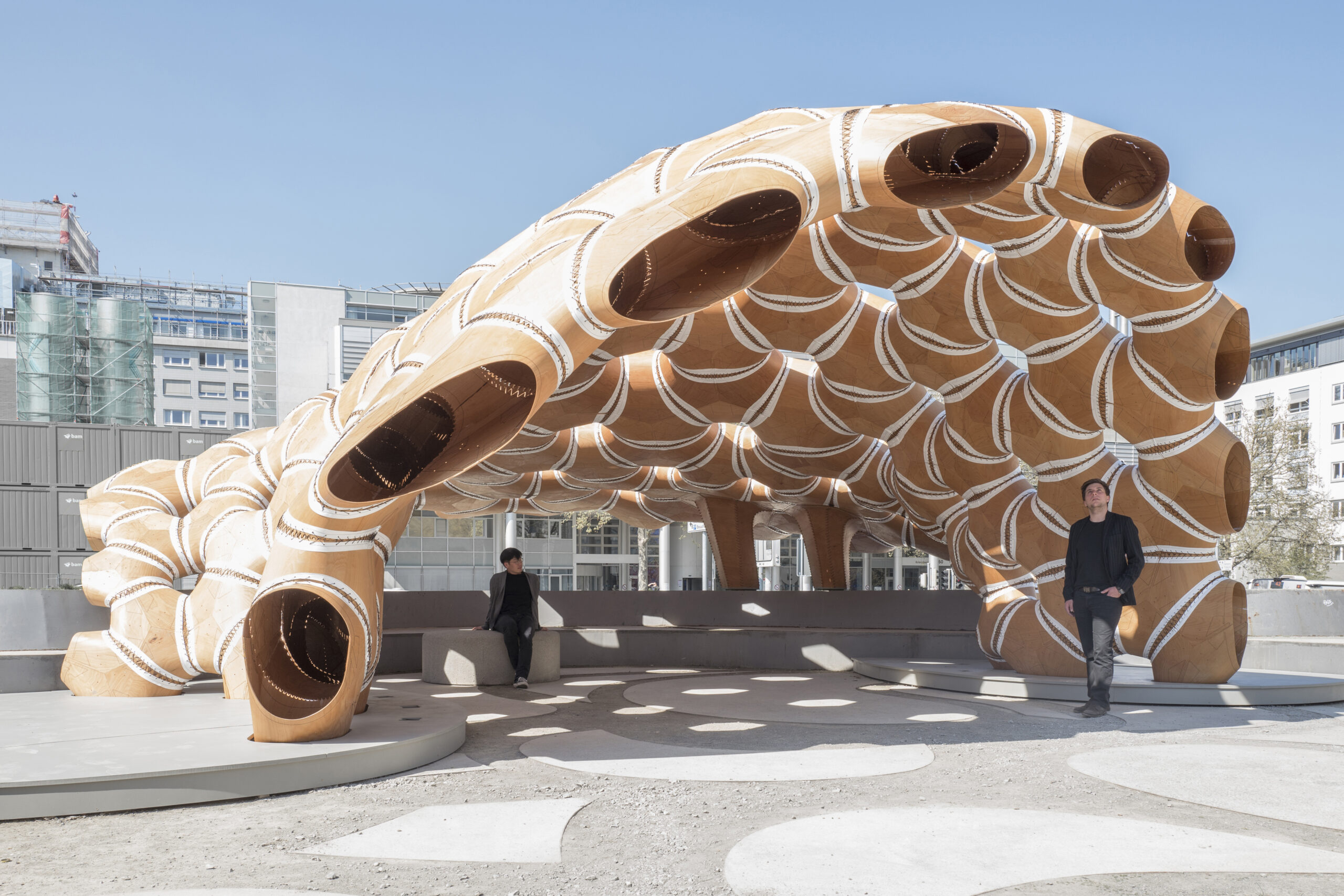Architecture 101: What is Parametric Architecture?
Architects: Want to have your project featured? Showcase your work through Architizer and sign up for our inspirational newsletters.
Parametric design in architecture uses computer tools to define how different design parts are connected. These parts, called “parameters,” can include design and building aspects such as materials, feasibility and energy efficiency. Instead of adjusting each part manually, architects create formulas or algorithms to automatically generate designs. This approach allows for more flexibility and precision and can create stunningly complex and dynamic forms.
Characteristics of Parametric Architecture

Walt Disney Concert Hall by Frank O. Gehry, Los Angeles, California | Photo by Miguel Martinez via Pexels.
How is parametric architecture different than nonparametric architecture?
Parametric architecture differs from nonparametric architecture in its use of algorithms and formulas to manipulate the design process, allowing for real-time adjustments that translate into greater flexibility; for instance, changes to one element automatically update the entire design. This ability makes possible the creation of complex forms that would be challenging to achieve manually.
Nonparametric architecture, on the other hand, relies on manual processes where each element must be adjusted individually. This approach generally results in simpler forms and is time-consuming compared to parametric design, which is faster and more efficient, especially for large or intricate projects.
What are the typical characteristics of parametric architecture?
Parametric architecture stands out for its flexibility, making it easy to explore design options without starting from scratch. This flexibility resembles the transition from manual drafting to computer drafting we experienced decades ago. Remember when you could simply hit “undo” on the computer to reverse a mistake and go back several steps? In contrast, with manual drafting, you’d often find yourself erasing hours of work, only to begin all over again.
This flexibility in parametric design allows architects to experiment, knowing that changes can be made seamlessly. Parametric design often features complex geometries such as irregular forms, curvilinear geometry and fluid lines. Relying on algorithms to automatically generate forms allows designers to manipulate models in real time and explore various design scenarios. Additionally, decisions are data-driven, considering factors such as materiality, feasibility and energy efficiency.
What software is most used for parametric design?
- Grasshopper (for Rhino): A visual programming language enabling architects to develop intricate parametric models by establishing relationships among various components. This approach facilitates dynamic design adjustments, allowing for greater flexibility and efficiency in architectural projects.
- Dynamo (for Revit): A design tool that integrates with Autodesk Revit, enabling parametric modeling and automating repetitive tasks within building information modeling (BIM) workflows.
- Generative Components (GC): A parametric design tool developed by Bentley Systems, tailored specifically for infrastructure and civil engineering projects. Unlike Grasshopper, which is widely used in architecture and industrial design, GC excels in handling large, complex projects like airports, roads and rail systems.
- Houdini: Primarily used in the film industry, Houdini has also found applications in Architecture for the procedural generation of intricate and complex forms.
- Catia: Originally developed for the aerospace industry, Gehry Partners pioneered the use of Catia in architectural design, adapting the software to create some of their most iconic, complex structures such as the Walt Disney Concert Hall in Los Angeles and the Guggenheim Museum in Bilbao, Spain.
History of Parametric Architecture

Duncan Champney, A 3D version of the Mandelbrot set plot “Map 44” from the book “The Beauty of Fractals”, CC BY-SA 4.0
Is Gaudi’s architecture considered parametric?
In Antoni Gaudí’s epoque, the concept of parametric design as we know it with computational input obviously did not exist, so categorizing his work as parametric might be misleading. However, we can say that Antoni Gaudí is considered a precursor to parametric architecture if we look at his innovative approach to design.
His work features exceptionally complex geometries and curves, such as the hyperbolic paraboloids and catenary arches in the Sagrada Familia and the adjacent school building with a sine wave roof. These forms resonate with parametric design principles, emphasizing mathematical relationships and organic shapes to achieve structural and aesthetic creations. The innovative construction methods that he used, allowed designs to evolve throughout the building process; and his mathematical techniques, including tessellation and fractals, reflect concepts embraced by contemporary parametric tools.
So while Gaudí predated the parametric design era, his innovative techniques and visionary approach significantly influenced its development with unique forms and geometries that challenged conventional architecture.
Did Zaha Hadid invent parametric designs?
Zaha Hadid did not invent parametric design, but she was a prominent figure in its application in architecture. Several mathematical and computational concepts laid the groundwork for parametric design in architecture long before Zaha Hadid appeared in the architectural scene amazing the world with her stunning works of fluid forms.
Early concepts go as far back as the 18th century, when descriptive geometry, developed by Gaspard Monge, enabled accurate representation of three-dimensional objects, influencing architecture and engineering. Algorithmic geometry and spline curves, used in shipbuilding and automotive industries, allowed the creation of smooth aerodynamic shapes essential to later parametric models.
Additionally, non-Euclidean geometry introduced organic forms and optimized structures; early computational theories in the 1960s paved the way for CAD systems; and later in the 1970s, fractal geometry introduced recursive patterns used in modern parametric tools. These concepts laid the foundation for parametric design long before Hadid popularized them.
Which architects are associated with parametric architecture?
Zaha Hadid revolutionized architectural design with fluid, dynamic geometries. Her firm, Zaha Hadid Architects (ZHA), has become closely associated with parametricism, where design evolves from complex interactions between spatial elements.
Frank Gehry was instrumental in the use of parametric software, such as Catia, to create groundbreaking architectural forms, setting a precedent for how architects can push the boundaries of design by transforming complex geometries into buildable structures.
Bjarke Ingels and his firm, BIG, use parametric design to balance functionality with aesthetic complexity. Their process is highly data-driven, employing algorithmic tools to address environmental and design challenges, and optimizing their structures for performance and visual impact.
UNStudio integrates parametric tools to design user-oriented, adaptable designs. Their approach emphasizes the creation of fluid and responsive spaces that showcase dynamic forms while maintaining a strong connection with the urban context. This demonstrates how parametric design can go beyond form to influence user experience and functionality.
Tom Wiscombe Architecture is known for exploring parametric architecture’s artistic and structural potential. His designs emphasize aesthetics and materiality through intricate geometries and patterning.
What are famous examples of parametric architecture?
Parametric architecture is leaving a bold imprint on the landscape of contemporary design, with innovative structures that exhibit fluid, complex, and dynamic forms. These standout examples are reshaping our understanding of what architecture can achieve through cutting-edge computational techniques. Here are a some striking examples:

Opus by Zaha Hadid Architects, Dubai, United Arab Emirates. | Photo by Laurian Ghinitoiu.
The Opus building, home to the ME Dubai hotel in the Burj Khalifa district, stands as a powerful testament to the interplay between geometric rigor and fluid abstraction. Its bold cubic form captures attention with its clean and orthogonal lines. However, this powerful shape is disrupted by a dramatic carve-out that “erodes” the cube from the inside. This void introduces a striking contrast, softening the cube’s hard edges with its fluid, undulating contours and challenging the static nature of typical highrise structures. Simultaneously, the design creates a striking interplay between solid and void, transparency and reflection, and structured versus amorphous forms.

The Twist / Kistefos Gallery by BIG – Bjarke Ingels Group, Viken, Norway | Photo by Laurian Ghinitoiu.
The Twist / Kistefos Gallery by BIG (Bjarke Ingels Group) in Norway exemplifies parametric design in its fluid, twisting form. The gallery spans a river, creating both a bridge and an art space with its dynamic shape. The gallery’s form twists 90 degrees along its length, creating an elegant interplay between geometry and structural performance, a hallmark of parametric architecture.

Beijing National Stadium by Herzog and De Meuron. Beijing, China. | Photo by Bernd Dittrich via Unsplash.
The Beijing National Stadium, commonly known as the “Bird’s Nest” and designed by Herzog & de Meuron in collaboration with Ai Weiwei for the 2008 Olympics, is a prime example of parametric design in large-scale architecture. The stadium’s iconic form, resembling a nest of interwoven steel beams, balances aesthetic form with functional requirements. This design approach enabled precise load distribution calculations and material efficiency, making the Bird’s Nest visually striking and structurally innovative.

Al Bahr Towers by AHR. Abu Dhabi, United Arab Emirates | Photos by Aedas.
The Al Bahar Towers in Abu Dhabi, designed by Aedas Architects, showcase a dynamic shading system that automatically adjusts to the sun’s movement, reducing heat gain and enhancing energy efficiency. Inspired by traditional mashrabiya screens, the facade is composed of over 1,000 umbrella-like elements, controlled by parametric algorithms. These elements open and close in response to the sun, optimizing light and temperature inside the building. This parametric approach integrates form, sustainability, and local culture into the towers’ design, making them a hallmark of high-performance architecture.

Education Executive Agency & Tax offices by UNStudio, Groningen, Netherlands. | Photo by Ronald Tilleman.
The Education Executive Agency & Tax Offices, designed by UNStudio, exemplifies parametric design in its unique geometry and spatial organization. The building’s double-helix structure, inspired by DNA, allows the design to fluidly combine organic forms with structural efficiency. Another notable project by UNStudio is the Mercedes-Benz Museum in Stuttgart.
The Future of Parametric Architecture
What are the criticisms of parametric architecture?
Critics of parametric architecture often raise several concerns regarding its implications and effectiveness. One major criticism is that it prioritizes aesthetics and visual complexity over functionality. This focus on form can result in structures that appear disconnected from their environmental context and local culture, undermining their relevance.
Additionally, while parametric design can optimize certain efficiencies, it sometimes contradicts sustainable practices, as the materials and techniques employed can contribute to a larger environmental footprint.
Critics also point out that the complexity inherent in parametric design is often more motivated by the architect’s desire to showcase technical prowess or aesthetic vision rather than by practical or functional considerations. This emphasis on complexity may lead to higher construction costs and maintenance challenges.
Lastly, the advanced technology required for parametric architecture can create a barrier for smaller firms, widening the gap between technologically driven elite firms and traditional architectural practices.


ICD/ITKE RESEARCH PAVILION 2015-16 by the Institute for Computational Design (ICD) University of Stuttgart.
Why is parametric architecture associated with biomimicry?
Both fields draw inspiration from natural systems and share a common emphasis on complexity, adaptability, and efficiency, which facilitates innovative designs that mimic organic forms and structures. This synergy allows for a deeper understanding of how natural processes can influence architectural and design practices.
Adaptability is crucial in both approaches, with parametric architecture enabling structures to respond dynamically to environmental conditions, much like living organisms. This enhances sustainability by optimizing energy usage and minimizing ecological impacts.
Additionally, both disciplines prioritize material efficiency, using resources wisely to reduce waste while maintaining structural integrity.
How is AI changing parametric architecture?
AI is revolutionizing parametric architecture by transforming design processes through generative design tools that produce multiple design iterations based on specific criteria. This approach not only optimizes performance but also promotes innovative solutions. By utilizing formulas and algorithms, architects can analyze vast datasets that can contribute to the creation of visually striking and contextually responsive designs.
As AI technology continues to advance, its influence on parametric architecture expands, enabling greater precision, efficiency, technological innovation, and unlimited creativity. This collaboration between AI and architecture promises to enhance productivity and redefine the scope of architecture, ultimately pushing the boundaries of the imaginable.
Architects: Want to have your project featured? Showcase your work through Architizer and sign up for our inspirational newsletters.
The post Architecture 101: What is Parametric Architecture? appeared first on Journal.
